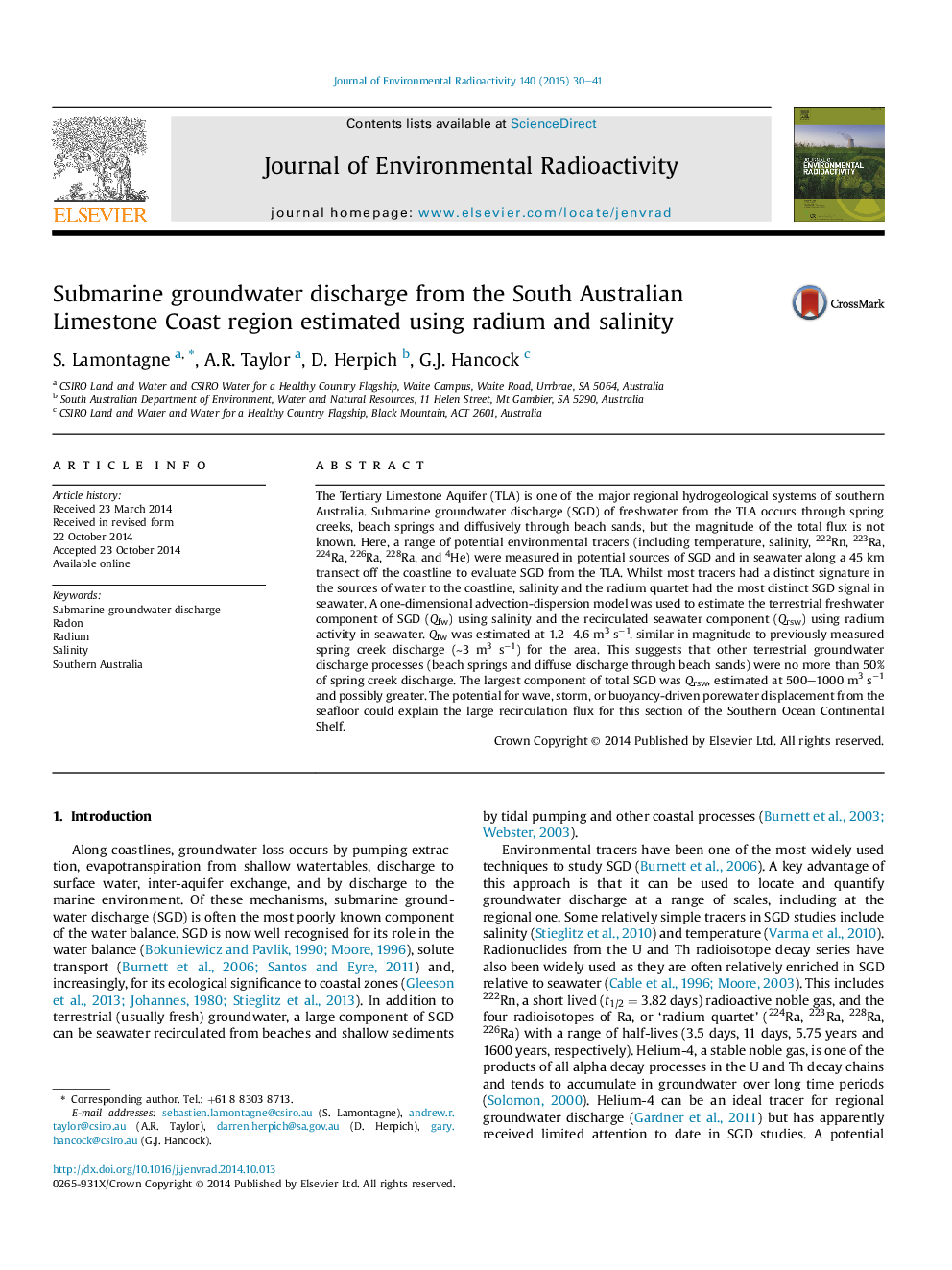| Article ID | Journal | Published Year | Pages | File Type |
|---|---|---|---|---|
| 8082481 | Journal of Environmental Radioactivity | 2015 | 12 Pages |
Abstract
The Tertiary Limestone Aquifer (TLA) is one of the major regional hydrogeological systems of southern Australia. Submarine groundwater discharge (SGD) of freshwater from the TLA occurs through spring creeks, beach springs and diffusively through beach sands, but the magnitude of the total flux is not known. Here, a range of potential environmental tracers (including temperature, salinity, 222Rn, 223Ra, 224Ra, 226Ra, 228Ra, and 4He) were measured in potential sources of SGD and in seawater along a 45Â km transect off the coastline to evaluate SGD from the TLA. Whilst most tracers had a distinct signature in the sources of water to the coastline, salinity and the radium quartet had the most distinct SGD signal in seawater. A one-dimensional advection-dispersion model was used to estimate the terrestrial freshwater component of SGD (Qfw) using salinity and the recirculated seawater component (Qrsw) using radium activity in seawater. Qfw was estimated at 1.2-4.6Â m3Â sâ1, similar in magnitude to previously measured spring creek discharge (â¼3Â m3Â sâ1) for the area. This suggests that other terrestrial groundwater discharge processes (beach springs and diffuse discharge through beach sands) were no more than 50% of spring creek discharge. The largest component of total SGD was Qrsw, estimated at 500-1000Â m3Â sâ1 and possibly greater. The potential for wave, storm, or buoyancy-driven porewater displacement from the seafloor could explain the large recirculation flux for this section of the Southern Ocean Continental Shelf.
Related Topics
Physical Sciences and Engineering
Energy
Nuclear Energy and Engineering
Authors
S. Lamontagne, A.R. Taylor, D. Herpich, G.J. Hancock,
